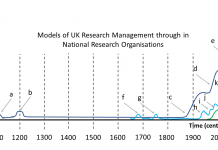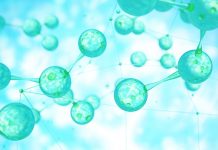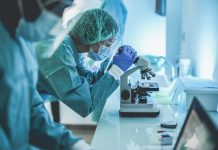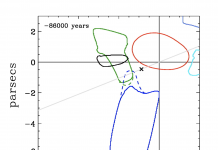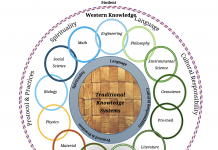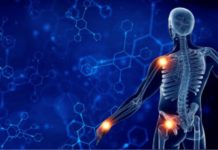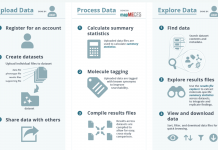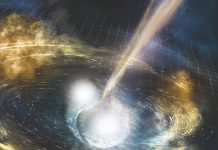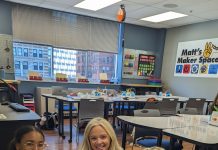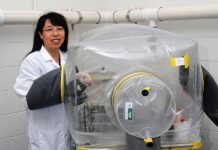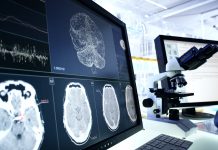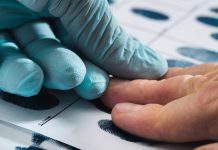Home Science and Research
Science and Research
Do research software engineers have research methods?
Dr Joanna Leng, School of Computing, University of Leeds, Dr Phillip Brooker, School of Sociology, University of Liverpool and Emeritus Prof Wes Sharrock, School of Sociology, University of Manchester, all from the UK, ponder if Research Software Engineers have research methods, plus why today, we have increasingly more types of academic research institutions and organisations.
Investigating lung cancer using genetically engineered mouse models (GEMMS)
Daniel J. Murphy, Professor of Lung Cancer & Mesothelioma at the University of Glasgow, School of Cancer Sciences, discusses opportunities for improving cancer research and care through the use of genetically engineered mouse models.
Independent research experiences in sustainable chemistry
The Research Experiences for Undergraduates (REU) programme in the Department of Chemistry at Michigan State University was created to inform students majoring in chemistry, biochemistry and chemical engineering about key societal sustainability challenges and to provide graduate-level independent research experiences that address aspects of these challenges.
Enhance expertise in European research infrastructures
Marialuisa Lavitrano, Full Professor at University Milano Bicocca, explores the need for a European School for the Management of Research Infrastructure to enhance expertise in European research infrastructure management.
Astrophysical and planetary sciences: Exploring the local interstellar medium and the next space frontier
Prof Jeffrey L Linsky from the University of Colorado Boulder, sheds light on exploring the next space frontier in this exciting astrophysical and planetary sciences focus.
Carbon dots in forensics, environmental science, and medicine
Dr. Cecilia E. Van Cauwenberghe, from Frost & Sullivan, explains the revolutionary impact of carbon dots in forensics, environmental science, and medicine to detect, diagnose, and treat.
Indigenous students face disparities in STEM
Dr. Judith Brown Clarke and Dr. Wendy K’ah Skaahluwaa Todd, shed light on the crucial role of cultural identity in native American-Alaskan students’ persistence and success in STEM fields and the Geosciences.
Revolutionizing pain medication: Preventing addiction and side effects
Stephen Vanner, president of pHarm Therapeutics Inc., and Christoph Stein, inventor and co-founder, discuss a new class of analgesics for pain caused by tissue injury and inflammation.
Ultrananocrystalline diamond coating (UNCD™): Revolutionizing surface engineering
Unique, low-cost ultrananocrystalline diamond (UNCD™) coating is facilitating new generations of industrial products, high-tech devices, medical devices, and prostheses.
Data and specimen-sharing tools offer new discovery opportunities for ME/CFS researchers
Within the field of Myalgic Encephalomyelitis/Chronic Fatigue Syndrome (ME/CFS) research, two online tools: mapMECFS (Mathur and Carnes, 2021) and searchMECFS play a crucial role in advancing the understanding of ME/CFS by encouraging researchers to share and use data and biospecimens that are stored in centralized and easily accessible data portals.
What remains when two neutron stars collide?
Distinguished Professor Susan M. Scott and Dr Karl Wette from the Australian National University examine what remains when two neutron stars collide in this exciting gravitational astrophysics focus.
The rising tide of the autonomous ships market
Anastasiya Azarko, Junior Innovation Consultant and Marco Molica Colella, Managing Consultant at CiaoTech – PNO Group, tell us about the autonomous ships market and some of the initiatives that are broadening capabilities within the maritime industry.
Transforming integrative maker education for STEM: Empowering pre-service teachers
Dr Ginny Chambers and Dr Kamryn York from Point Park University tell us about a project aimed at enhancing integrative maker education through the training of pre-service teachers, focusing on elementary education.
Gnotobiotic pig models: Illuminating the enigma of human norovirus infection and immunity
Dr Lijuan Yuan and her team have studied human noroviruses (HuNoV) in gnotobiotic pigs for over 15 years. Here, she explains how such research is advancing our understanding of HuNoV pathogenesis, infectivity, and immunity.
The rotating lepton model: Electron and positron catalysis of chemical and nuclear synthesis
Professor Emeritus Constantinos Vayenas from the University of Patras and PhD student Dionysios Tsousis from Stanford University discuss electron and positron catalysis in the CERN e+e- annihilation experiments via the Rotating Lepton Model.
Exploring neurological & mental brain disorders in Europe
European Brain Council provides a very helpful update on Brain disorders in Europe – neurological and mental alike.
NIJ puts science to work for justice system stakeholders
Nancy La Vigne PhD, Director of the National Institute of Justice, shares perspectives on how the Institute advances justice across the nation and beyond, strengthening the scientific tools and discoveries that support justice system stakeholders.
The fair principles: Trusting in fair data repositories
Andy Götz, ESRF data manager and PaNOSC coordinator, discusses the impact of applying the FAIR principles to research data.
Vestas Aircoil: Key insights from successfully bridging the gap between academia and industry
Open Access Government engages in a conversation with Kevin Jose, a recently graduated PhD student who concluded his research and successfully defended his thesis at the University of Southampton. In this interview, Kevin shares his insights on transitioning from academia to industry.
Emergent dimensionality: Exploring all possible (and unobservable) extra dimensions
Dr Szymon Łukaszyk, Łukaszyk Patent Attorneys, explains emergent dimensionality, exotic R4, ‘life as the explanation of the measurement problem’, and personal motivations.



